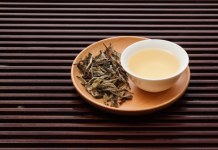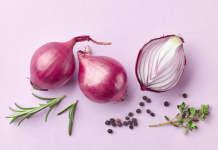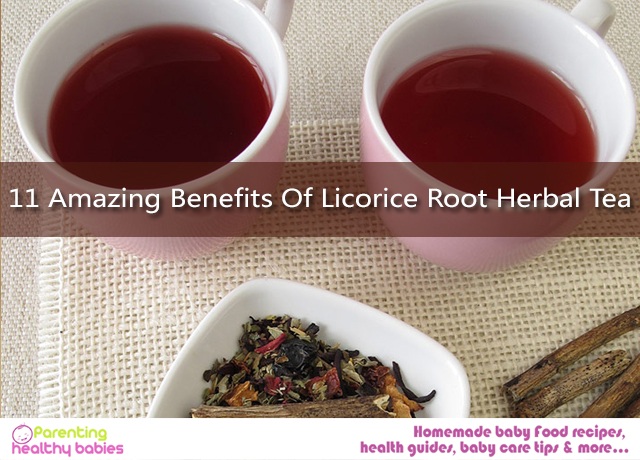There is a lot of buzz on the internet about wheatgrass and its whole range of benefits. Most of us after searching for while give up after sometime, as some people suggest that there are numerous benefits while others say that the benefits have not been scientifically proven. So, who is to be believed?

Source: pass the bean dip
We’ve tried to sort it out to the extent possible by verifying the actual science behind wheatgrass and its benefits.
First off, wheatgrass is plain sprouts of wheat. The green wheatgrass is harvested before wheat actually grows and the whole plant turns brown. The history of wheatgrass can be traced back to ancient Egyptian and Mesopotamian cultures more than 5000 years ago. Back then it was believed by Egyptians that green wheatgrass offers health and vitality to a person who consumes it.
After the fall of Egyptians, people mostly forgot about wheatgrass. During the 1930s, in the United States, an agricultural chemist named Charles F. Schnabel conducted several experiments on wheatgrass and found that wheatgrass contained high amounts of vitamins and minerals which were vital for human health.
Here is the nutritional value of wheatgrass from the United States Department of Agriculture’s National Nutrient Database.
| Nutrient | Amount per 100 g | Nutrient | Amount per 100 g |
| Water | 47.75 g | Energy | 198 kcal |
| Protein | 7.49 | Total Lipid | 1.27 g |
| Carbohydrates | 42.53 g | Dietary Fiber | 1.1 g |
| Calcium | 28 mg | Iron | 2.14 mg |
| Magnesium | 82 mg | Phosphorous | 200 mg |
| Potassium | 169 mg | Sodium | 16 mg |
| Zinc | 1.65 mg | Vitamin C | 2.6 mg |
| Thiamin | 0.225 mg | Riboflavin | 0.155 mg |
| Vitamin B6 | 0.265 mg |
Health Benefits of Wheatgrass
Here are some of the benefits of wheatgrass.
Good source of vitamins and minerals: Wheatgrass is a very good source of vitamins and minerals. Each of the micronutrients such as iron, calcium, magnesium, potassium, vitamin C, vitamin B-6, riboflavin, etc are essential for a healthy body.
Can increase hemoglobin: According to this study, wheatgrass juice reduced the dependency of transfusion in thalassemia major. In other words, wheatgrass can help in increasing the production of hemoglobin. Drinking wheatgrass juice is helpful for patients suffering with anemia.
Detoxifies body with antioxidants: As mentioned in our earlier articles, antioxidants are those biochemicals that help in protecting against free radical activity which damages the cells from within. And wheatgrass has good amount of antioxidants which counter the free radical activity to a great extent.
Helps in digestion: Taking wheatgrass juice on a regular basis is also good for digestion. The presence of cellulose in wheatgrass helps in food digestion and keeps the colon clean.
Reduces constipation: Wheatgrass has a good amount of dietary fiber. Dietary fiber adds bulk to stools and absorbs moisture. This makes bowel movement relatively simple, relieving the person from constipation.
Remedy for acidity: Acidity is caused by excessive production of gastric acids which can cause considerable damage to stomach lining. Wheatgrass is believed to be alkaline in nature. And conventional theory says that, an alkaline substance is best suited for nullifying the effect of acid.
Helps in healing faster and reduces inflammation: Taking wheatgrass on a regular basis can help in healing wounds faster. In one study it was found that taking wheatgrass juice on a regular basis reduced ulcers or sores in ulcerative colitis. Thus, it can be said that wheatgrass promotes healing.
Possesses anti-microbial properties: Various studies have shown that wheatgrass juice possesses anti-microbial properties. Anti-microbial properties in herbs and various other plant parts is of great interest in science today because of the fact that many of the disease causing bacteria are growing resistance of standard antibiotic medications. New antibiotics are necessary to control such microbes. Wheatgrass is one such herb which can help in controlling harmful microbes.
Can fight radiation: Chlorophyll is a component that can fight against radiation. This is very helpful for cancer patients who are undergoing radiation or chemotherapy. The chemical compounds that accumulate during the therapy regime can be flushed out by the biochemicals present in the wheatgrass.
Cleans skin from the inside: The rejuvenating effects of wheatgrass are helpful in cleansing the skin from the inside. Wheatgrass helps in removing dead skin cells and imparts a glow to your skin.
Anti-aging properties: Another reason why taking wheatgrass juice is good because of its anti-aging properties. The antioxidants present in wheatgrass not only reduce the free-radical activity, but can also help in reducing grey hair. Apart from taking wheatgrass juice, the powder of dry wheatgrass powder can be applied to your hair like a paste. It restores natural color to your hair.
How to grow wheatgrass at home
Growing wheatgrass is relatively simple. All you need are high quality wheat seeds. High quality wheat seeds are those which are large, equal sized seeds.
Germination: The first and the foremost step is to clean the seeds thoroughly for 3 -4 times before the germination process. For germination, you need to soak the seeds overnight. After the soaking process, remove the water completely and let the seeds germinate for about 48 hours. During 48 hour time period, sprinkle few drops of water on the seeds for every 8 hours and drain excess water.
Grass growing process: Use a plastic tray or a wide earthen pot for the planting process. Make a hole at the bottom to drain all the excess water. Molds and bacteria develop in stagnant water. Spread a paper towel across the tray so that right amount of moisture is retained in the tray. Now fill 1/3rd of the tray with a mixture of soil and manure. Now, spread the germinated seeds in the soil and give them a gentle push into the soil. Flatten the surface gently so that there are no ups and downs in the soil. Ups and downs mean that whenever you water the tray, it can stagnate causing molds to grow. Let this tray be in a cool and dark place for another 48 hours for root development.
Watering the tray: Rather than pouring water, which most of us are used to, here we need to spray water on the soil. Just few drops of water are required to be evenly sprayed across the tray. Do not spray excessively or let water stagnate at any point. After 4 days, wheatgrass will start growing. Water the tray in very little quantities for 2-3 times a day and take care to drain away excess water. Make sure that you do not keep the tray under direct sunlight. Wheatgrass grows best in shade.
Wheatgrass will grow to the desirable length in about 1 week to 10 days. Now you can harvest the grass and use it.
Things to take care about wheatgrass
Though wheatgrass has numerous health benefits, there are some issues associated with wheatgrass, particularly for infants, toddlers and pregnant women.
Bacterial and mold infections: As wheatgrass is grown in moist conditions, there are many chances of bacterial infections or molds growing in wheatgrass. As wheatgrass is consumed raw, chances are that these bacterial infections or molds can enter to the person ingesting wheatgrass. This is particularly an issue with infants, toddlers and pregnant women who are very sensitive to any bacterial or fungal infections. So, caution is advised to pregnant women taking wheatgrass and parents giving wheatgrass juice to infants and toddlers.
Allergic reactions: Wheatgrass can cause nausea, headaches, hives or swelling in throat either right after ingestion or after few minutes of ingestion. If the person experiences swelling of throat, check with your doctor immediately. People with grass allergy, celiac disease or gluten intolerance should avoid wheatgrass.












